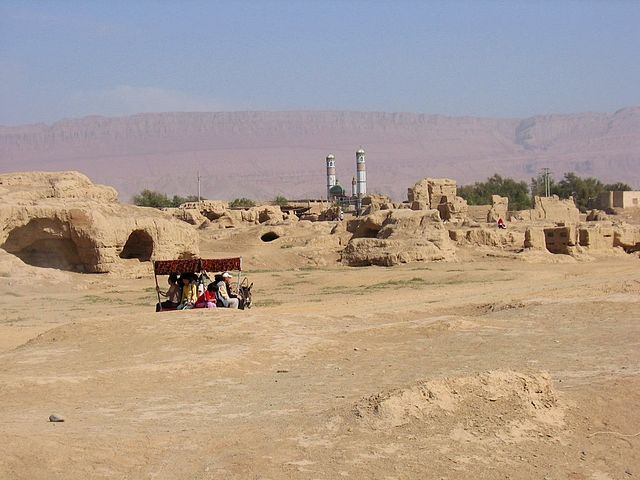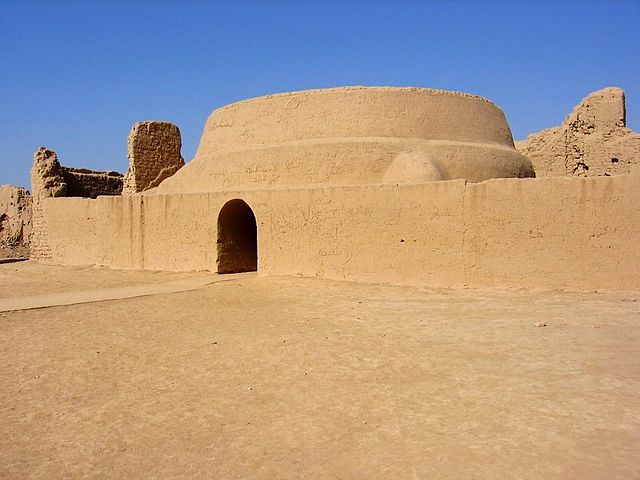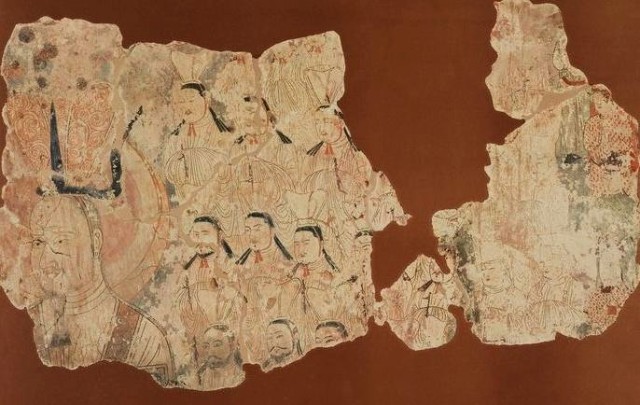
| GAOCHANG
The Buddhist stup of Gaochang ruins
Shown within Xinjiang
Location : Xinjiang, China
Gaochang (Pinyin: Gaochang; Old Uyghur: Qocho), also called Karakhoja, Qara-hoja, Kara-Khoja or Karahoja, is the site of a ruined, ancient oasis city on the northern rim of the inhospitable Taklamakan Desert in present-day Xinjiang, China. The site is also known in published reports as Chotscho, Khocho, Qocho or Qoco. During the Yuan and Ming dynasties, Gaochang was referred to as "Halahezhuo" (Qara-khoja) and Huozhou.
The ruins are located 30 km southeast of modern Turpan. The archaeological remains are just outside the modern town of Gaochang, at a place called Idykut-schari or Idikutschari by local residents. Artistic depictions of the city have been published by Albert von Le Coq. Gaochang is considered in some sources to have been a "Chinese colony", that is, it was located in a region otherwise occupied at the time by West Eurasian peoples.
A busy trading center, it was a stopping point for merchant traders traveling on the Silk Road. It was destroyed in wars during the 14th century and old palace ruins and inside and outside cities can still be seen today.
Near Gaochang is another major archeological site: the Astana tombs.
History :
Gaochang's location (close to Turpan) on the Silk Road
Jushi Kingdom and early Han Chinese rule :
Gaochang was built in the 1st century BC, it was an important site along the Silk Road. It played a key role as a transportation hub in Western China. The Jushi leaders later pledged their allegiance to Han dynasty. In 327, the Gaochang Commandery (jùn) was created by the Former Liang under the Han Chinese ruler Zhang Gui. The Chinese set up a military colony/garrison and organized the land into multiple divisions. Han Chinese colonists from the Hexi region and the central plains also settled in the region.
After the fall of the Western Jin Dynasty, Northern China split into multiple states, including the Central Asian oases. Gaochang was ruled by the Former Liang, Former Qin and Northern Liang as part of a commandery. In 383 The General Lu Guang of the Former Qin seized control of the region.
In 439, remnants of the Northern Liang, led by Juqu Wuhui and Juqu Anzhou, fled to Gaochang where they would hold onto power until 460 when they were conquered by the Rouran Khaganate. Another version of this story says that in 439 a man named Ashina led 500 families from Gansu to Gaochang. In 460, the Rouran forced them to move to the Altai. They became the Ashina clan that formed the Gokturk Khaganate.
Six Dynasties Turfan tombs contained dumplings.
Gaochang Kingdom :
Manichaean priests, writing at their desks. Manuscript from Qocho. 8th / 9th century From the mid-5th century until the mid-7th century, there existed four independent statelets in the narrow Turpan basin. These were controlled by the Kan clan, Zhang clan, Ma clan and Qu clan.
A the time of its conquest by the Rouran Khaganate, there were more than ten thousand Han Chinese households in Gaochang. The Rouran Khaganate, which was based in Mongolia, appointed a Han Chinese named Kan Bozhou to rule as King of Gaochang in 460, and it became a separate vassal kingdom of the Khaganate. Kan was dependent on Rouran backing. Yicheng and Shougui were the last two kings of the Chinese Kan family to rule Gaochang.
At this time the Gaoche was rising to challenge power of the Rouran in the Tarim Basin. The Gaoche king Afuzhiluo killed King Kan Shougui, who was the nephew of Kan Bozhou. and appointed a Han from Dunhuang, named Zhang Mengming, as his own vassal King of Gaochang. Gaochang thus passed under Gaoche rule.
Later, Zhang Mengming was killed in an uprising by the people of Gaochang and replaced by Ma Ru. In 501, Ma Ru himself was overthrown and killed, and the people of Gaochang appointed Qu Jia of Jincheng (in Gansu) as their king. Qu Jia hailed from the Zhong district of Jincheng commandery (roughly corresponding to modern day Lanzhou, Gansu) Qu Jia at first pledged allegiance to the Rouran, but the Rouran khaghan was soon killed by the Gaoche and he had to submit to Gaoche overlordship. During Qu rule, powerful families established marriage ties with each other and dominated the kingdom, they included the Zhang, Fan, Yin, Ma, Shi and Xin families. Later, when the Göktürks emerged as the supreme power in the region, the Qu dynasty of Gaochang became vassals of the Göktürks.
While the material civilization of Kuch to its west in this period remained chiefly Indo-Iranian in character, in Goachang it gradually merged into the Tang aesthetics. In 607 the ruler of Gaochang Qu Boya paid tribute to the Sui Dynasty, but his attempt at sinicization provoked a coup which overthrew the Qu ruler. The Qu family was restored six years later and the successor Qu Wentai welcomed the Tang pilgrim Xuanzang with great enthusiasm in 629 AD.
Wall painting from a Nestorian Christian church, Qocho 683 – 770 CE The Kingdom of Gaochang was made out of Han Chinese colonists and ruled by the Han Chinese Qu family which originated from Gansu. Jincheng commandery (Lanzhou), district of Yuzhong was the home of the Qu Jia. The Qu family was linked by marriage alliances to the Turks, with a Turk being the grandmother of King Qu Boya's.
Tang
rule :
Under Tang rule, Gaochang was inhabited by Chinese, Sogdians and Tocharians.[citation needed]
7th or 8th century old dumplings and wontons were found in Turfan.
Tang dynasty became greatly weakened due to the An Lushan Rebellion and in 755, the Chinese were forced to pull back their soldiers from the region. The area was first taken by the Tibetans, then finally by the Uyghurs in 803, who called the area Kocho (Qocho).
Uyghur princesses, cave 9, wall painting from Bezeklik caves
Man of Gaochang (Turfan) in (937 - 976 CE)
Uyghur Kingdom of Qocho :
Qocho later became a vassal state of the Kara-Khitans. However, In 1209, the idiqut Barchuq offered Genghis Khan the suzerainty of his kingdom, and went personally to Genghis Khan with a sizeable tribute when demanded in 1211. The Uyghurs thus went into the service of the Mongols, who later formed the Yuan Dynasty in China. The Uyghurs became bureaucrats (semu) of the Mongol Empire and their Uyghur script was modified for Mongolian. As far south as Quanzhou, preponderance of Gaochang Uyghur in Nestorian Christian inscriptions of the Yuan period attests to their importance in the Christian community there.
The Gaochang area was conquered by the Mongols of the Chagatai Khanate (not part of Yuan Dynasty) from 1275 to 1318 by as many as 120,000 troops.
Buddhism
:
Gaochang
ruling families :
Rulers of the Zhang Family :
Rulers of the Ma Family :
Rulers of the Qu Family :
Gallery :
The road leading in
The ruins
Main storage building
Main storage building
Manichaean wall painting Source :
https://en.wikipedia.org/ |
||||||||||||||||||||||||||||||||||||||||||||||||||||||||||||||||||||||||||||
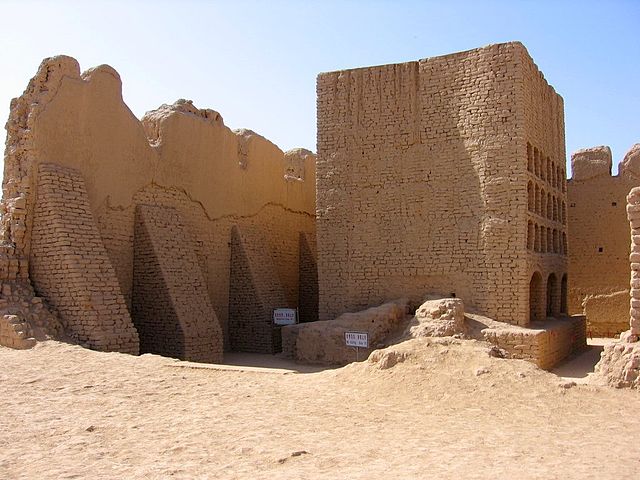
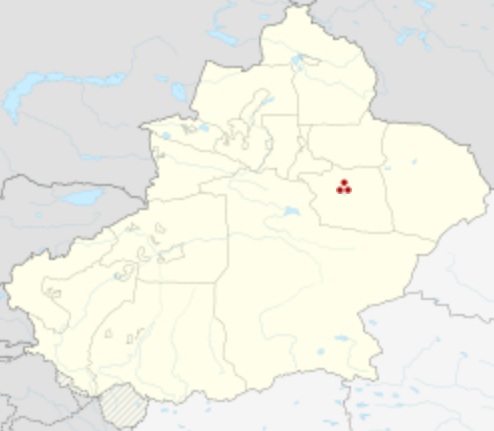
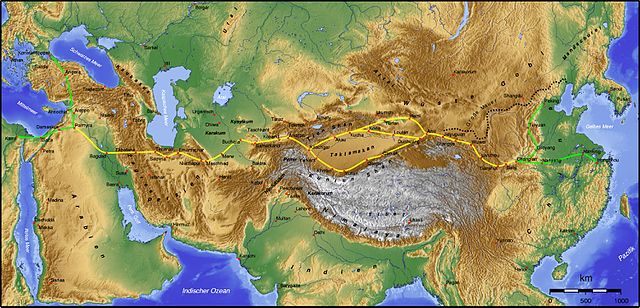
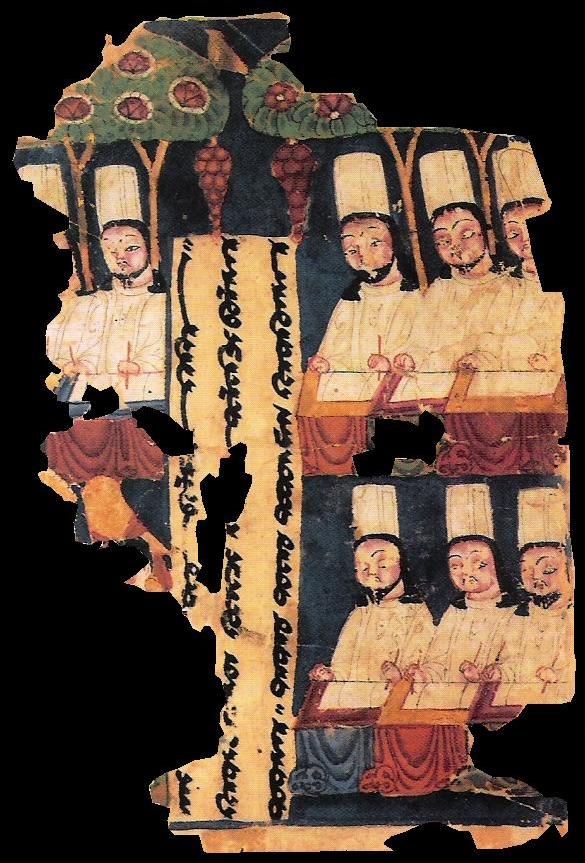
,_Khocho,_Nestorian_Temple,_683-770_AD,_wall_painting_-_Ethnological_Museum,_Berlin_-_DSC01741.jpg)
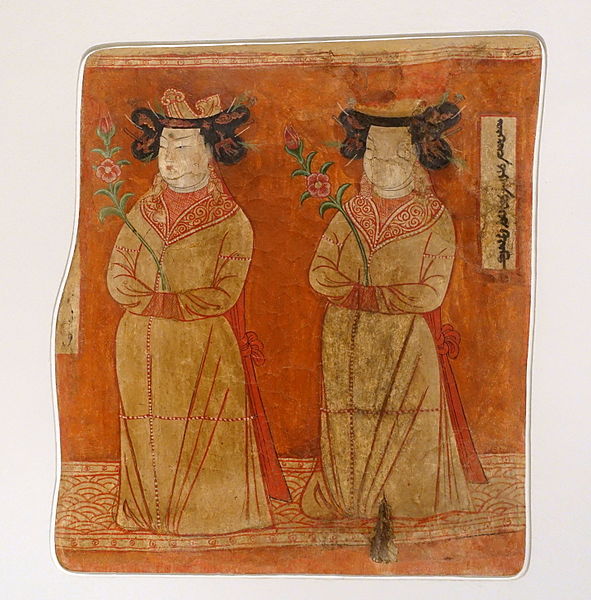
(937-976_CE).jpg)
